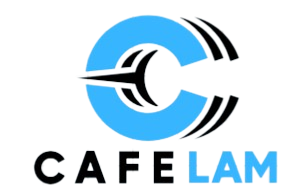Key Takeaways
● Understanding your costs is fundamental to setting profitable price used clothes.
● Market research and platform analysis ensure your prices are competitive and appealing.
● Factoring in brand reputation, item condition, and psychological pricing techniques can help you secure higher sales and profits.
● Offering discounts and bundles and adjusting prices based on demand can rapidly move inventory and grow your customer base.
Table of Contents
Understanding Your Costs
Researching Market Prices
Considering Brand and Condition
Factoring in Platform Fees
Implementing Psychological Pricing
Offering Bundles and Discounts
Adjusting Prices Based on Demand
Providing Detailed Descriptions and Quality Photos
Final Thoughts
Understanding Your Costs
Accurate pricing begins with a solid understanding of all costs tied to each item you plan to sell. This includes the purchase price, cleaning or minor repairs, packaging materials, and potential shipping fees. For example, if you obtain a shirt for $10, spend $5 for cleaning, and another $3 on packaging, your base cost is $18. Calculate these expenses meticulously before setting your listing price used clothes to ensure you aren’t underpricing. To learn more about the best places to sell clothes online you can discover selling platforms optimized for various clothing categories and profit margins.
This approach also helps prevent undervaluing the effort and finances invested in preparing each item for sale. Keeping detailed records of your costs will help you measure profitability over time and refine your pricing strategy with reliable data.
Researching Market Prices
Review what similar garments are selling for on leading resale platforms. This research enables you to benchmark your prices competitively, making your listings more attractive to buyers. If vintage Levi’s jeans, for instance, are consistently listed between $40 and $60, consider starting your price within this bracket, adjusting up or down based on your item’s unique features and condition.
Considering Brand and Condition
Each piece’s brand and overall condition play a pivotal role in pricing. Premium brands naturally command higher prices—especially if items are gently used or in like-new condition. Highlighting these qualities in your product descriptions allows buyers to perceive higher value, making them more likely to pay a premium.
Detailed inspection before listing also benefits your reputation as a seller. Buyers who receive well-described, accurately priced clothing will likely provide positive feedback and become repeat customers.
Factoring in Platform Fees
The fee structure of each online resale site impacts your final profit. Calculating and including these fees in your selling price is essential for sustaining a viable business model. Doing the math for each platform informs your pricing—what works on one might not be profitable on another.
Implementing Psychological Pricing
Applying psychological pricing tactics, such as listing an item at $19.99 instead of $20, can influence buyer perception, making the price appear to be a better deal. This strategy, widely used by retail stores, also works well for secondhand clothing, helping your listings stand out in a competitive marketplace. Rounded prices that feel intuitive, and affordable prices can tip the scales in your favor, especially for bargain-hunting buyers.
Offering Bundles and Discounts
Bundling items—such as offering three shirts at a discounted combined rate—promotes higher order values and moves slow-selling items faster. Volume discounts incentivize buyers to order more, increasing your average sale price while clearing inventory. Be sure to calculate your profit margins on bundled deals to maintain profitability and advertise these deals clearly in your product descriptions and store banners.
Adjusting Prices Based on Demand
Observing how your items perform over time is critical. A strategic price drop or a flash promotion may increase visibility and encourage sales if a listing garners few views or watchers. On the other hand, if a piece gains a lot of interest, consider holding firm on price or raising it. Tracking these trends provides useful feedback, shaping an agile approach to pricing that responds promptly to buyer demand and marketplace trends.
Providing Detailed Descriptions and Quality Photos
Well-lit, clear photos and thorough, accurate descriptions create trust with buyers, often leading to quicker sales and higher ratings. Transparently detail each item’s brand, material, measurements, and any flaws. Listings backed by honesty and strong visuals attract serious buyers who are willing to pay more for a hassle-free, trustworthy transaction. Effective listings also help minimize returns and disputes, protecting your margins long-term.
Final Thoughts
Successfully price used clothes hinges on understanding your true costs, leveraging market research, considering brand and condition, and factoring in platform fees. Employing psychological pricing, offering bundles, and adapting to changing demand further enhance profit potential. By combining data-driven strategies with transparent communication and presentation, you can consistently achieve strong sales while providing genuine value to customers.







